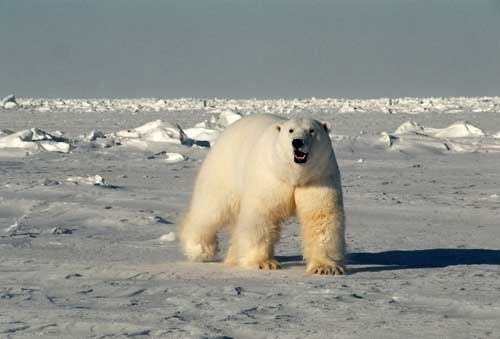Black and brown bears are known to go to hibernate during the winter seasons, to stay warm, cozy and to conserve energy. But researchers are curious to find an answer, why polar bears residing at higher latitudes, unlike brown and black bears hibernate and how do they stand the freezing cold of arctic tundra. Only female expecting babies are often seen to hide in caves during winters to save themselves in exceedingly low temperatures.
The latest study reveals that in order to stay warm, the Arctic polar bears take advantage of genetic adaptations and nitric oxide. Nitric oxide is a vital compound used by cells while transforming the nutrients derived from the food into heat and energy.
The team of scientists led by the University at Buffalo, studied the mitochondrial and nuclear genomes derived from 23 polar bears, a black bear and three brown bears and found that in the polar bears, the genes regulating the production of nitric oxide is genetically dissimilar than the related genes found in brown and black bears.
Lead researcher Charlotte Lindqvist, PhD, UB assistant professor of biological sciences, said that with the drastic changes in the climate across the planet, it gets more interesting to understand different adaptations exhibited by the organisms living at higher latitudes. She further adds:
This study provides one little window into some of these adaptations. Gene functions that had to do with nitric oxide production seemed to be more enriched in the polar bear than in the brown bears and black bears. There were more unique variants in polar bear genes than in those of the other species.
The team says that the adaptation at the genetic level by which the nitric oxide controls energy metabolism is very important. Ideally, the role of the cells is to convert the nutrients derived from the food into energy. However, due to adaptive or non-shivering thermogenesis, a circumstance in which the cells convert nutrients into heat instead of energy while countering an unusual environmental conditions or diet.
The amount of heat or energy to be produced by the cells after metabolizing the nutrients or the amount of nutrients to be stored as fat, is signaled by the levels of the nitric oxide produced in the body. Durham University’s Andreanna Welch, PhD, first author and a former postdoctoral researcher at UB with Lindqvist said, that the energy production might get obstructed by the high levels of nitric oxide. While at ordinary levels, nitric oxide decides and regulates, whether the energy or heat to be generated using the nutrients.
The research shows that the way nitric oxide is controlled and managed by the bears at the arctic makes them different from their dark colored bear species. This insight gives us understanding how other species in such bleak and freezing conditions manage to survive.




